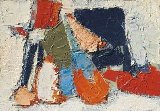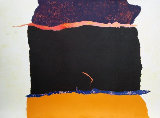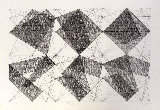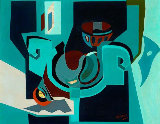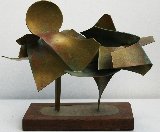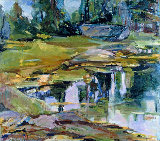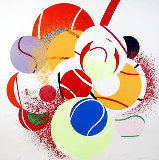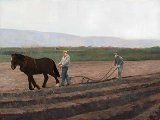-

-
Philip Evergood
United StatesArt Brokerage: Philip Evergood American Artist: b. 1901-1973. Philip Howard Francis Dixon Evergood (born Howard Blashki; 1901–1973) was an American painter, etcher, lithographer, sculptor, illustrator and writer. He was particularly active during the Depression and World War II era. Philip Evergood believed in art's power to find the truth and in art's responsibility to reveal it. His imagery of people caught in the grip of privation, unemployment, racial bigotry and social injustice revealed the consequences of the American Dream abused, the American promise broken. Philip Evergood's Social Realism, for all its rough edges and rough lives, was nevertheless anchored in the formal demands of art. His training at London's Slade School, New York's Art Students League, and the Academie Julian in Paris provided Philip Evergood with a strong foundation in drawing. Throughout his life, he drew constantly, perfecting an already formidable draftsmanship. This strength of drawing holds the narrative together and allowed him to induce feelings through color and impart emotions through gesture, in figures rendered in modernist strokes. In 1923, Philip Evergood returned to New York and studied at the Art Students League, where he met George Luks, and through Luks, met John Sloan and Reginald Marsh. These artists' scenes of life on the city's streets and in its tenements had a profound effect on the young Evergood, turning his attention from the grandeur of his European training to the grittier realities of his native soil. There would be two additional stints in Paris, in 1926 and 1930, before Philip Evergood once again returned to New York, where The Great Depression struck deep into the artist's passions. From the windows of the loft he shared with his wife on East 14th Street, Philip Evergood saw people destroyed by the economic catastrophe; the out of work, the out of hope, the luckiest, like himself, barely scraping by. These were the great human dramas of the time that gave Philip Evergood purpose for creating his art. Though Philip Evergood became one of the leading lights of the Social Realist movement, his own financial situation, like the financial situation of most artists, was often dire. Things improved somewhat with projects for the Roosevelt Administration's Public Works Art Project (PWPA), the Works Progress Administration (WPA), and his warm relationship with Herman Baron (founder of ACA Gallery, now ACA Galleries), who exhibited Evergood's work. The turning point came in the late 1930s, when Joseph H. Hirshhorn invited Evergood to bring his paintings to his penthouse at One Fifth Avenue; Hirshhorn purchased ten paintings on the spot. Though Evergood's personal and professional situation improved, his passions remained with everyday people struggling for their bread and dignity. Throughout the 1940s and beyond, he continued to expose the realities of social injustice, the brutality of war, and racial bigotry. By the 1950s, he expanded his oeuvre into expressions of the human fantastic. Though still rooted in the discipline of fine draftsmanship, Evergood now explored humanity's inner life expressed in biblical and mythological themes. But even within this more symbolist realm, Evergood maintained his commitment to human dignity and the struggle to achieve it. Listings wanted.
Read More + - Create Listing 1 Artworks for sale 1 Followers

|
Philip EvergoodFamily 1965Limited Edition Print: Lithograph, Hand Signed, From the edition of 10015x21 in | 38x53 cm |
🔥Framed Limited Edition Lithograph $1,500
Reduced
Buy / Offer / Ask Question
I have one and want to sell it
|





















